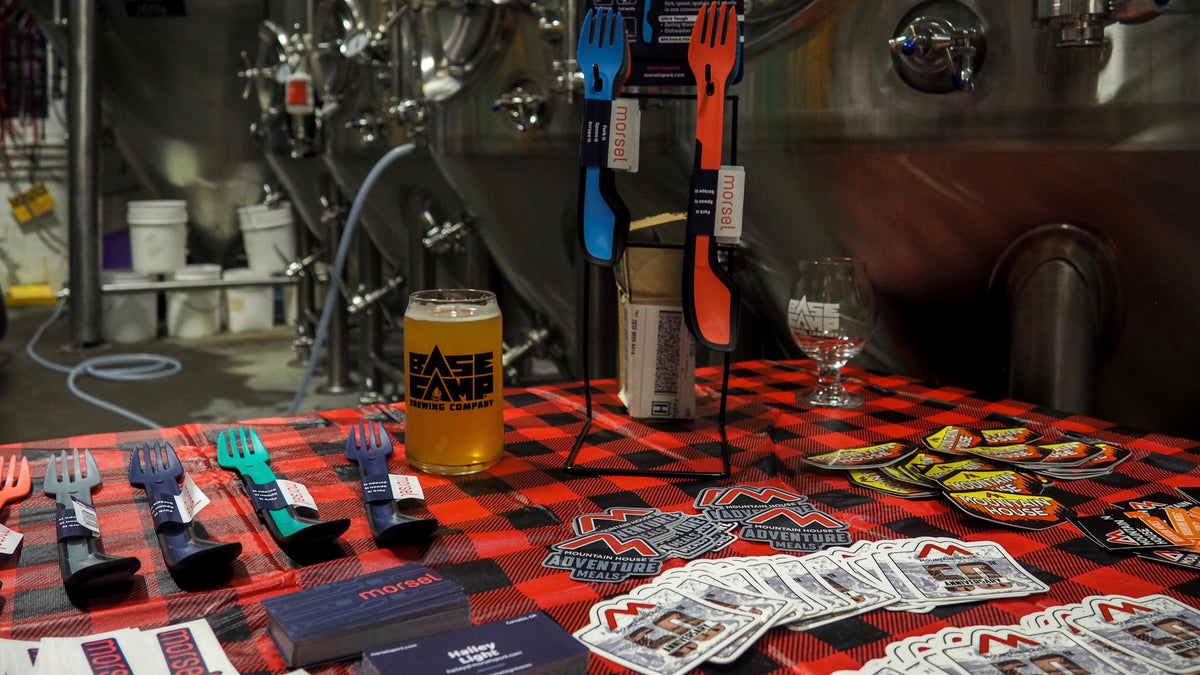
Why We Picked Aluminum Over Titanium
Exploring the inside of your local outdoor store can feel like an adventure in itself. Each year we’re greeted with fancy new outdoor gear tech, and a whole new set of buzzwords and jargon to digest. We want to shed a little light on one frequently misunderstood subject: ultralight metals.

In particular, we’re going to focus on the differences between aluminum and titanium, both of which are commonly used in high performance outdoor gear, along with a variety of other materials.
Let’s start with some basics of material science. Most “metal” used in production is actually an alloy - basically, a molten stew of different metals and compounds. For instance, steel is primarily composed of iron, but can also include carbon, manganese, nickel, chromium, molybdenum, vanadium, and other alloying elements. Changing the alloy can affect things like strength, ductility, corrosion resistance, and more.

But wait - there’s more! We can further enhance material properties by adding a heat treatment or temper to the material - essentially, heating and cooling the material in a prescribed fashion. This helps align the molecules in the metal and can substantially change the way a metal behaves.
So how do aluminum and titanium actually compare? Read on!
Titanium is all the rage in the outdoor products world - sporks included - and for a metal that was named after a cadre of ancient Greek gods and goddesses, it certainly receives its share of the hype. Most titanium sporks on the market use grade 1 or 2 titanium (2 is slightly stronger), with no coating. Grade 1/2 titanium is the softest and most ductile flavor of titanium, and easiest to stamp into shapes, but it lacks some of the amazing properties of more exotic titanium grades. So how does titanium actually compare to aluminum alloys? The results might surprise you!
Compared to grade 2 titanium, 7075-T6 aluminum is 33% lighter and has a higher tensile strength, strength-to-weight, and stiffness-to-weight. Aluminum can also be anodized - effectively growing an ultra hard, ultra durable skin on the outside of the metal.

That’s why we designed the latest Morsel Metal with aluminum - because it’s simply the best for technical sporking. And while we’re here, we want to clear up some common misconceptions about the two controversial materials.
Myth vs. Truth
Myth: “Titanium is much lighter than aluminum.”
Sorry to burst your bubble, but when we look at material densities, titanium’s density of 4.5 g/cc is actually 50% heavier than aluminum’s 3.0 g/cc.
Myth: “Titanium is stronger than aluminum.”
It depends on the alloy, but 7075-T6 aluminum has nearly double the strength-to-weight of grade 2 titanium.

Myth: “Aluminum is bad for the environment”
Titanium uses nearly 4 times the embodied carbon (CO2 emitted during the manufacture, transport and construction of materials), and more than 3 times the embodied energy of aluminum.
Myth: “Aluminum is bad for humans.”
This is a persistent myth based on a discredited study done in the 60’s. In fact, 60% of pots and pans sold in the US each year are built from aluminum, and the FDA has reported that the amount of aluminum that makes its way into foods is significantly less than the amount found in foods naturally. In addition, hard anodizing aluminum adds an ultra tough and durable skin to the raw surface.

Is a titanium spork that much more bang for your buck? We know at Morsel our new ultralight 7075-T6 aluminum sporks are the most innovative and versatile sporks out there.
Leave a comment
Comments will be approved before showing up.
Also in Journal

What Is Kickstarter?

Building a Community Through a Dirtbag’s Version of Wine Tasting


Hadron Gear
Author